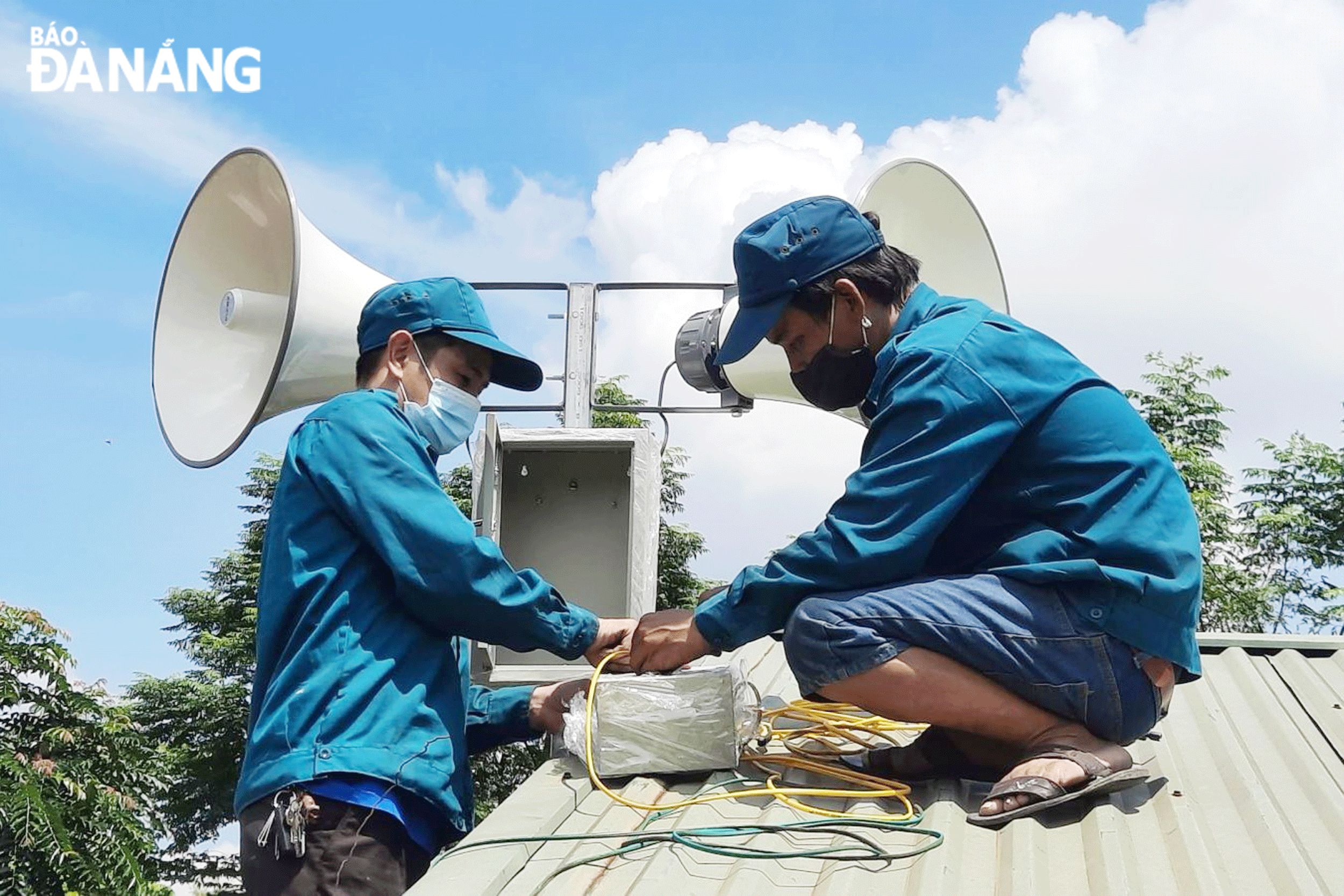Smart radio broadcasting changes way to access information
The development of science, information technology and the internet requires the traditional radio industry to boost digital transformation, and diversify content quality and methods of reaching readers. Smart radio is being chosen by localities in the city to convey information closer to people.
 |
| Digital radio and television are trends in the development of digital technology products. Photo: CHIEN THANG |
Currently, smart radio based on state-of-the-art IP technology, with IP meaning 'internet protocol', is considered an effective solution that contributes to creating a feedback channel with a completely new approach to content compared to traditional broadcasting. IP uses digital information transmission technology through the packet transmission environment using internet, 3G/4G, wifi, and then sends information to users based on the access address of each device.
In terms of technology, IP will overcome the disadvantages of FM broadcasting, specifically the coverage everywhere, in all conditions as long as there is an internet network, good sound quality, no interference or strange waves, and simple operation, management, monitoring, and storage via cloud computing.
At the same time, with IP technology, technical staff can control playback, turn on and off; schedule stations to automatically broadcast easily using computers or handheld mobile devices; and monitor and adjust the volume of remote speaker clusters.
A number of districts across the city are now focusing on developing IP platforms, thereby receiving positive responses from many people.
Mr. Nguyen Thanh Nam, a resident of Hoa Phong Commune, Hoa Vang District, said that he and his neighbours were extremely delighted at the use of IP-based speakers instead of traditional ones. He revealed some advantages of IP-based speakers such as flexible news broadcasts, good sound quality, high security, and broadcast schedules set by hour, day or week.
Many telecom businesses have participated in IP development in Da Nang and achieved certain results. Typically, the IP broadcasting solutions of Viettel, VNPT, MobiFone are acting as an ecosystem to build new-style rural plans, helping the city soon achieve a smart city and become a bridge between government and people.
In fact, deploying IP technology to grassroots radio stations takes time and a lot of efforts. On the other hand, the advantage of IP technology is that it is more secure than the FM system, but mobile operators need to ensure that they provide private channel transmission lines for absolute information security.
On May 10, 2024, Deputy Prime Minister Tran Luu Quang signed a decision to promulgate Decree No. 49/2024/ND-CP regulating grassroots information activities.
Accordingly, district-level radio and television stations will stop broadcasting and relaying before December 31, 2025. After the decree takes effect, the district-level radio station system can shift from mainly radio broadcasting production to multi-media, multi-platform communication using telecommunications infrastructure. Previously, the Ministry of Information and Communications and the Da Nang Department of Information and Communications conducted a survey to deploy in many districts in the city.
Two localities selected for pilot implementation are Hoa Vang District and Son Tra District. To date, Son Tra District has installed 20 IP sets which are divided equally into An Hai Bac and Nai Hien Dong wards. Similarly, Hoa Vang District has taken steps to convert traditional speaker systems to IP-based ones with limited upgrades and purchases of new equipment for traditional FM receiver and speaker clusters, along with raising public awareness about the benefits of IP clusters.
According to Deputy Director of the Culture, Information and Sports Centre of Hoa Vang District Pham Hung, among the plans to digitize radio broadcasting, Hoa Vang District has considered a digitalisation plan by using IP transmission technology to transmit and receive radio news via the internet, 3G/4G mobile waves, Wi-Fi waves instead of broadcasting via traditional FM waves.
Up to now, the district has installed about 44 IP receiver clusters in 11 communes as a premise for IP coverage throughout the locality. The district-based Centre for Culture, Information and Sports has advised on a roadmap to equip IP for all areas in the district. In the immediate future, the district will support equipment installation for communes of Hoa Nhon, Hoa Son, Hoa Phu, Hoa Phong and Hoa Phuoc.
Reporting by CHIEN THANG - Translating by M.DUNG